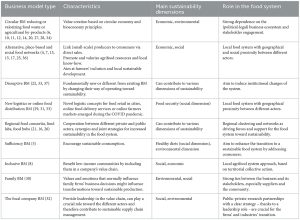Exploring Sustainable and Socially Responsible Investment Opportunities
4 min read
Socially responsible investments have grown increasingly popular as they provide peace of mind to investors. This trend has gained even more momentum following the COVID-19 pandemic, which raised serious concerns over environmental and economic inequality.
Socially responsible investing prioritizes financial returns while simultaneously seeking to influence positive change across three key areas: environment, society and corporate governance (ESG). Investors may select businesses that align with their moral or ethical principles over those which fall outside.
Investing in the Future
As more millennials and younger generations enter the workforce, many are exploring sustainable and ethical investments as a means of aligning their investments with personal values or as a response to concerns that companies producing harmful products such as cigarettes or firearms aren’t adequately regulated.
Sustainable investing, also known as ESG (environmental, social, and governance) investing, has gained increased attention among millennials and other investors due to demand from younger investors. ESG investing involves screening investment opportunities based on their effects on the environment, society, and corporate governance – something many younger investors desire when making financial decisions.
If you want to include sustainability into your investing strategy, there are various resources available that can help. As You Sow is one such resource which allows users to plug any fund’s ticker and compare how it performs on various criteria such as its relation to fossil fuels or gender equality.
Investing in the Metaverse
The metaverse is an electronic world accessible via immersive devices like Virtual Reality (VR) glasses that offers people new experiences such as socializing, shopping, gaming and work – including potential social gatherings and work. By 2030 this industry could potentially reach $4.5 trillion.
There are various public companies investing in the metaverse, including Meta Platforms, Snap and Nvidia. Investors should bear in mind that these companies will need to expend considerable funds developing necessary technology; as a result they should only commit funds they are prepared to lose should the investment fail to pan out as planned.
Additionally, the metaverse will generate vast quantities of data and bandwidth that requires companies to find alternatives for centralized storage space. Businesses who create eco-friendly innovations in the metaverse will gain a competitive edge and ensure their investments are sustainable and socially responsible.
Investing in Virtual Reality
VR’s most well-known use is gaming, but the industry offers much more. VR can simulate science experiments, help medical students learn surgical techniques and even train pilots on flight simulations.
Virtual reality (VR) can also be utilized in design, engineering, and architecture applications. Designers can utilize VR to construct models of bridges, skyscrapers, homes or any other structure to examine its flaws or make necessary adjustments; additionally they can view them from all directions using 360 degrees view or apply real life physics such as wind or water pressure to see how the structures react in response.
As with any investment, sustainability and social responsibility should be top of mind when selecting a virtual reality company to invest in. Investors should look at various ESG factors when making their selection, such as executive pay scales, political contributions and diversity among board of directors members. They may also consider the code of conduct implemented by each company along with any lawsuits filed or allegations of internal corruption pending against it; additionally they could invest in companies selling components needed to manufacture VR hardware such as pick-and-shovel investments that offer such components for purchase by such firms that offer such components for purchase by buyers; further consider pick-and-shovel plays or pick-and-shovel plays such as those that provide components needed by such investments compared with companies selling components needed by manufacturers of VR hardware manufacturers when investing.
Investing in Artificial Intelligence
As artificial intelligence (AI) becomes more advanced, investors are seeking out companies which use and develop it. AI can help increase productivity while making businesses more efficient while simultaneously cutting costs and producing innovative new products and services.
Investors interested in artificial intelligence (AI) should explore ETFs that specialize in this sector. Some ETFs specialize in “pure plays” while others invest in established companies that incorporate AI elements into their businesses.
Some ETFs specialize in advanced machinery, semiconductors or databases used for machine learning. Other ETFs focus on companies providing software or systems and those that integrate AI into existing technology – like Autodesk (ADSK) and Palo Alto Networks (PALO), who both offer AI-powered solutions that automate processes, improve pattern recognition and make design or prototyping simpler – as well as technology designed to combat cyber attacks or ransomware attacks.






